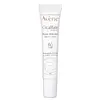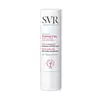What's inside
What's inside
 Key Ingredients
Key Ingredients

 Benefits
Benefits

 Concerns
Concerns

 Ingredients Side-by-side
Ingredients Side-by-side

Glycerin
HumectantRicinus Communis Seed Oil
MaskingWater
Skin ConditioningBeeswax
Emulsion StabilisingCaprylic/Capric Triglyceride
MaskingParaffinum Liquidum
EmollientBis-Diglyceryl Polyacyladipate-2
EmollientIsopropyl Palmitate
EmollientHydrogenated Castor Oil
EmollientHydrogenated Polyisobutene
EmollientPEG-45/Dodecyl Glycol Copolymer
Emulsion StabilisingAluminum Sucrose Octasulfate
Skin ConditioningZinc Oxide
Cosmetic ColorantMagnesium Sulfate
Zinc Sulfate
AntimicrobialGlycerin, Ricinus Communis Seed Oil, Water, Beeswax, Caprylic/Capric Triglyceride, Paraffinum Liquidum, Bis-Diglyceryl Polyacyladipate-2, Isopropyl Palmitate, Hydrogenated Castor Oil, Hydrogenated Polyisobutene, PEG-45/Dodecyl Glycol Copolymer, Aluminum Sucrose Octasulfate, Zinc Oxide, Magnesium Sulfate, Zinc Sulfate
Ricinus Communis Seed Oil
MaskingCaprylic/Capric Triglyceride
MaskingHelianthus Annuus Seed Oil
EmollientOleic/Linoleic/Linolenic Polyglycerides
EmollientHelianthus Annuus Seed Wax
Skin ConditioningRicinus Communis Seed Oil, Caprylic/Capric Triglyceride, Helianthus Annuus Seed Oil, Oleic/Linoleic/Linolenic Polyglycerides, Helianthus Annuus Seed Wax, Butyrospermum Parkii Butter, Hydrogenated Castor Oil, Copernicia Cerifera Cera, Camelina Sativa Seed Oil, Tocopherol, Ascorbyl Palmitate, Citric Acid
 Reviews
Reviews

Ingredients Explained
These ingredients are found in both products.
Ingredients higher up in an ingredient list are typically present in a larger amount.
This ingredient is an emollient, solvent, and texture enhancer. It is considered a skin-softener by helping the skin prevent moisture loss.
It helps thicken a product's formula and makes it easier to spread by dissolving clumping compounds.
Caprylic Triglyceride is made by combining glycerin with coconut oil, forming a clear liquid.
While there is an assumption Caprylic Triglyceride can clog pores due to it being derived from coconut oil, there is no research supporting this.
Learn more about Caprylic/Capric TriglycerideHydrogenated Castor Oil is created by adding hydrogen to castor oil. This helps stabilize the castor oil and raises the melting point. At room temperature, hydrogenated castor oil is solid.
Castor Oil helps moisturize the skin. It is rich in a fatty acid called ricinoleic acid. This fatty acid helps prevent moisture loss on the skin. This helps keep your skin soft and hydrated. Ricinoleic acid also has anti-inflammatory and pain reducing properties.
As a wax-like substance, Hydrogenated Castor Oil acts as an emollient. Emollients help keep your skin stay soft and smooth by creating a barrier. This barrier helps trap moisture.
Hydrogenated Castor Oil may not be fungal-acne safe. We recommend speaking with a professional.
Learn more about Hydrogenated Castor OilRicinus Communis Seed Oil is the INCI name for castor oil.
Castor Oil helps moisturize the skin. It is rich in a fatty acid called ricinoleic acid. This fatty acid helps prevent moisture loss on the skin. This helps keep your skin soft and hydrated. Ricinoleic acid also has anti-inflammatory and pain reducing properties.
Besides hydrating the skin, castor oil is also used to hydrate hair. By keeping the hair shaft moisturized, breakage is decreased. More studies are needed to show castor oil's effective on stimulating hair growth.
Castor oil is created by cold-pressing castor seeds and then purifying the oil with heat. It was used in Ancient Egypt as fuel in lamps and to help treat eye irritation.
The term 'fragrance' is not regulated in many countries. In many cases, it is up to the brand to define this term. For instance, many brands choose to label themselves as "fragrance-free" because they are not using synthetic fragrances. However, their products may still contain ingredients such as essential oils that are considered a fragrance.
Learn more about Ricinus Communis Seed Oil